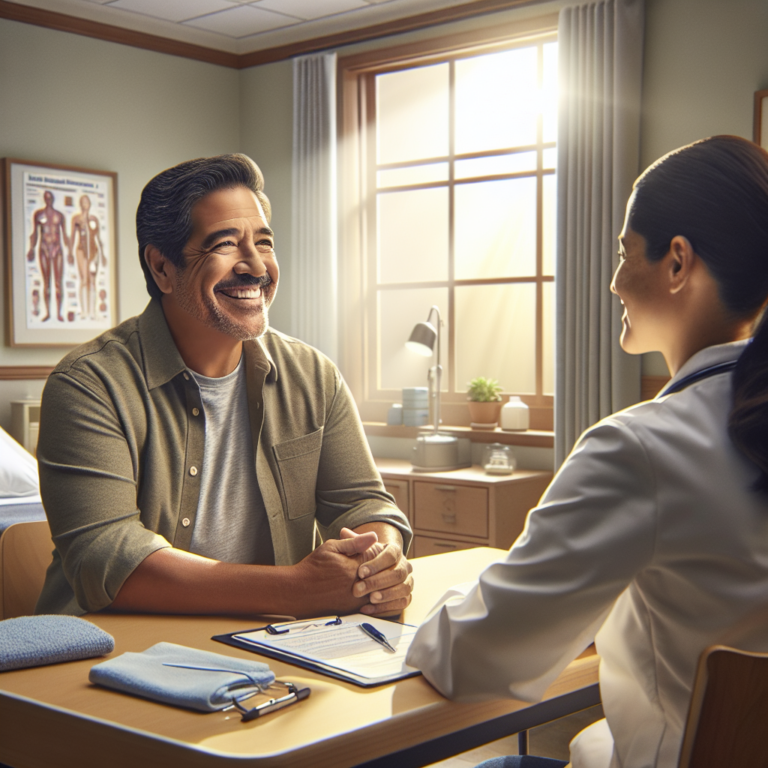From Charley Horse to Diagnosis: Uncovering a Pancreatic Neuroendocrine Tumor

In December 2014, Mark Head was just another resident of Rochester, New York, shoveling snow after a typical winter storm. However, his ordinary day took a dramatic turn when he suddenly struggled to breathe. Initially dismissing the incident as a possible heart attack, Mark soon discovered that this alarming episode was only the beginning of a much larger health crisis. After a series of medical evaluations, he learned he had a significant blood clot in his leg, which ultimately led to the discovery of a malignant pancreatic tumor.
Unraveling the Diagnosis
The journey began with a CT scan aimed at addressing the blood clot issue. Just hours later, Mark received a call from his doctor requesting an urgent meeting—an indication that his life was about to change. The scan revealed a 9 cm tumor on his pancreas, initially diagnosed as aggressive adenocarcinoma. Given the grim prognosis of three to six months to live, Mark promptly took steps to secure his financial future by submitting his retirement papers.
Fortunately, a biopsy revealed a different story. Renowned gastroenterologist Dr. Ari Chodos identified the tumor as an undifferentiated neuroendocrine pancreatic mass, a rarer form of cancer. While the prognosis was still serious—surgery was not an option due to the tumor’s proximity to crucial blood vessels—Mark’s condition was not as dire as initially feared. Had it not been for the alarming DVT incident, the tumor might have gone undetected for years.
Exploring Treatment Options
Faced with a life-altering diagnosis, Mark gathered his family for a critical discussion about his treatment. During this time, Dr. Chodos referred him to the Wilmot Cancer Institute, where a clinical trial involving a chemotherapy regimen known as CapTem was underway. In addition, Mark began monthly Sandostatin injections to help manage tumor growth.
His wife took the initiative to contact the Pancreatic Cancer Action Network (PanCAN), leading to invaluable insights about his treatment options. After nine months on the CapTem regimen, Mark experienced a significant reduction in tumor size—by 40 percent. Despite the positive progress, the tumor board at Wilmot ultimately determined that surgery was not feasible due to the tumor’s encroachment.
The Whipple Procedure: A New Hope
Determined to explore every option, Mark sought a second opinion from Johns Hopkins University Cancer Center. There, he met Dr. Marty Makary, who believed that even if complete tumor removal wasn’t possible, he could still remove a significant portion. On March 24, 2016, Mark underwent a successful Whipple procedure, resulting in the removal of 95 percent of the tumor.
Following the surgery, Mark experienced a relatively smooth recovery with minor complications. He continued to be monitored closely by his oncologist, Dr. Mohamed Tejani, at Wilmot. Regular blood tests and CT scans were implemented to track any signs of recurrence.
Living with Stage IV Cancer
Today, Mark’s diagnosis is classified as stage IV, meaning it is treatable but not curable. While he has three spots on his liver, they remain stable. The surgery led to diabetes, requiring him to manage his condition with medication and lifestyle adjustments, including a modified diet.
Mark’s experience has provided him with crucial insights that he passionately shares with others facing similar challenges:
- Seek a second opinion: Consulting a reputable cancer center can significantly impact treatment outcomes.
- Opt for experienced surgical teams: If surgery is indicated, choose a center that specializes in the procedure.
- Manage pain wisely: Limit opioid use, as their effectiveness can diminish over time.
- Don’t succumb to despair: Innovations in treatment options make living with cancer increasingly manageable.
- Leverage support systems: Engage with community groups for emotional and spiritual encouragement.
- Communicate openly: Discuss end-of-life preparations with loved ones to stay connected to life.
- Balance being a patient with enjoying life: Foster a mindset of learning and living fully.
Mark’s journey serves as a testimony to resilience and hope. His final message is clear: “Never Ever Give Up!”






